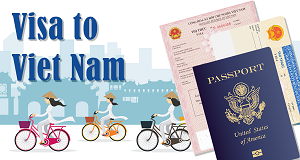U.S. trade policy plays role in Vietnam’s economic reforms
(This article appeared in The Hill, 8th Dec ,2011)
A quarter century after Vietnam reformed from a centrally planned into a market-oriented economy, two recent events have pointed to the pitfalls of global market integration. First, after two decades of rapid economic growth, inflation began to rise above 10%. Second, as Vietnam’s ambassador to Washington, Nguyen Quoc Cuong, said, “The global economic crisis has presented real challenges to our growth model as it highlighted a number of weaknesses of our economy.”
Yet far from pulling back, Vietnam is engaging on another round of reforms, with trade integration and openness to international investment still at the heart. Since joining the World Trade Organization in 2007, the government has been working on being designated as a beneficiary under the Generalized System of Preferences (GSP), under which the United States grants duty-free access to a range of products from developing countries. Some 130 countries are beneficiaries. Moreover, Vietnam is aggressively pursuing membership in the latest international trade bloc the Obama Administration has proposed, the Trans-Pacific Partnership. Vietnam has made a clear decision that integration is part and parcel of the domestic development agenda.
Ambassador Cuong said that Vietnam is taking “a balanced approach to TPP negotiations, with developed members paying consideration to the needs, concerns and level of development of developing members. TPP … should not distance itself from the reality that there are differences in many things, among which is the capability of each country.”
Vietnam’s success with international integration is largely due to the fact that it joined the world economy based on its own socio-economic development goals. Vietnam’s success story, in which a large portion of the population was pulled out of poverty, serves as an argument for considerate trade agreements which end up mutually beneficial to all parties involved.
While the United States buys more from Vietnam than it sells there, imports are made up largely of products the United States would hardly make at home anyhow, like coffee, footwear or apparel. In return, an increasingly wealthy Vietnam buys from the United States machinery, vehicles and, as Vietnam’s apparel industry grows, increasing amounts of cotton and yarn. Only when trade agreements serve both parties can they create long-term trade benefits for both sides.
Generalized System of Preferences
The United States with its huge market is known for heavy-handed negotiation tactics. David Olave, Director of Trade and Legislative Affairs at Sandler, Travis and Rosenberg, an international law firm specializing in trade law and policy, said that Vietnam’s industry and government must be fully involved in negotiations, since on the U.S. side, industry associations make sure that their interests are heard.
One program under which the United States takes the development needs of less developed countries into account is the GSP. If designated a beneficiary, some 4,800 Vietnamese products would enter the United States duty free. And unlike TPP, which requires multilateral negotiations and ratifications, plus the drafting of implementation rules, GSP could become a reality within months.
“GSP is an existing program,” said Olave. “Vietnam could join it as a bridge for the bigger prize, TPP, and could do so almost immediately.” The President will make the next designation next July.
Olave sees some hurdles for designation, but all of those need to be addressed for TPP membership as well. Vietnam needs to address labor rights issues to placate a vocal group in Congress. Second, the U.S. movie and pharma industries are pushing hard for a critical review of Vietnam’s intellectual property rights enforcement. But, Olave said, they have not opposed GSP for Vietnam; they only demanded “a special review and heightened attention to resolve outstanding problems.” He added that “all eyes are on Vietnam’s labor situation. Any significant [bad] news reported by NGOs about problems could hamper the effort.”
All parties understand the issues. The U.S. Trade Representative already has presented a white paper entitled “Trade-Enhancing Access to Medicines” at the September TPP discussions in Chicago. On a bilateral front, the United States and Vietnam held the annual labor dialogue last month.
Vietnam is aware of what the United States wants, but, as Ambassador Cuong has made clear, his country also has priorities that need addressing for a positive conclusion of any trade agreement. “We welcomed U.S. investment and trade, especially in high-tech areas,” he said. “We want our products ... [to] reach American consumers, especially through the GSP program. We also want to see the United States recognize our economy as a market economy, a status already recognized by many countries.”
GSP and TPP are integral parts of Vietnam’s reforms. The government needs both the pressures of international demands and the benefits from trade to push for new reforms domestically. Especially bringing inflation under control by reforming the state-owned enterprises is a task that requires carrots and sticks. Vietnam is using trade agreements as part of its reform policies. Success of the current negotiations will determine to a large degree how the market reforms – often used as a model for other reformers – will continue into the foreseeable future.



